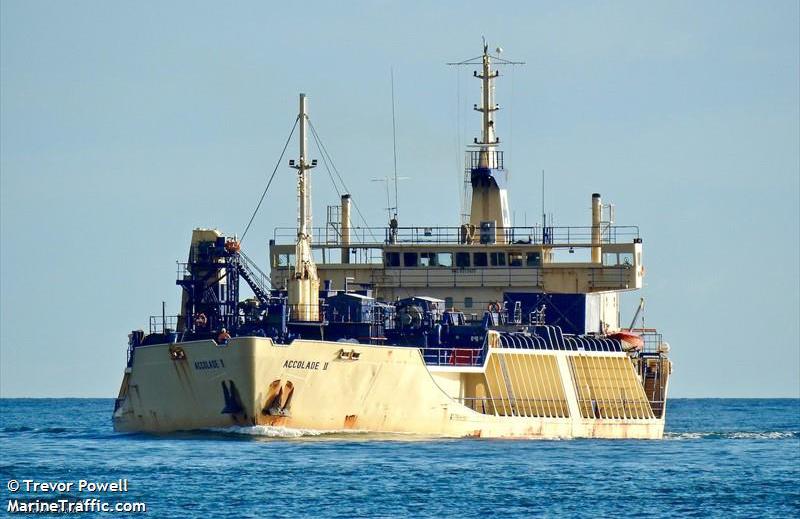A collision between a bulk carrier and a fishing vessel off Australia’s Port Adelaide highlights the importance of watchkeepers utilizing all available means to maintain a proper lookout, the Australian Transport Safety Bureau said in releasing its investigation report into the accident.
The incident took place just after 0430 on the morning of February 29, 2020, when the fishing vessel Sandgroper collided with the 108-meter-long self-discharging bulk carrier Accolade II just off the entrance to Port Adelaide, in darkness and clear visibility conditions.
Sandgroper sustained significant structural damage to its starboard bow, while Accolade II sustained only minor damage to its deck structures and railings on the ship’s starboard side. In addition, Sandgroper’s anchor was found lodged in Accolade II’s deck railings.
There were no reported injuries on either vessel.
“In the time leading up to the collision a proper lookout using all available means was not being maintained on board either vessel,” said ATSB Director Transport Safety Stuart Macleod.
“Consequently, neither was aware of the risk of the collision posed by the other, until shortly before the collision, when it was too late to take effective avoiding action.”
Macleod noted the navigation bridge team onboard Accolade II did not have a complete “appreciation” of the traffic situation nor the risk of collision outside the port channel before they exited the channel prior to the collision.
“In particular, effective use was not made of the ship’s radar and a dedicated lookout was not posted in darkness,” he said.
“And while Sandgroper’s skipper did initially sight Accolade II while it was still in the channel, a proper lookout was not subsequently maintained using all available means, including radar and monitoring the port’s working channel on the radio,” he said.
As a result, Sandgroper’s skipper was not aware that Accolade II had exited the channel, and that a close quarters situation was developing.
“Collisions between trading ships and small vessels continue to occur around the Australian coast, and the safety of fishers and people in small boats continues to be of real concern to the ATSB,” Macleod said.
“ATSB investigations have consistently shown that keeping a proper lookout by all available means – including radar, radio, and automatic identification system (AIS) transceiver – in accordance with the collision regulations, could have prevented most of these collisions.”
While Sandgroper was not required to be fitted with an AIS transceiver, it would have improved the vessel’s detectability.
“An AIS would have increased the chances of the fishing vessel being detected by Accolade II’s bridge team in sufficient time to avoid collision,” said Macleod.
The ATSB notes that Sandgroper has subsequently been fitted with an AIS, while the managers of Accolade II have advised the ATSB that a navigational audit of the ship’s operations has since been conducted, resulting in several recommendations to improve the ship’s bridge resource management practices.

 Join The Club
Join The Club











